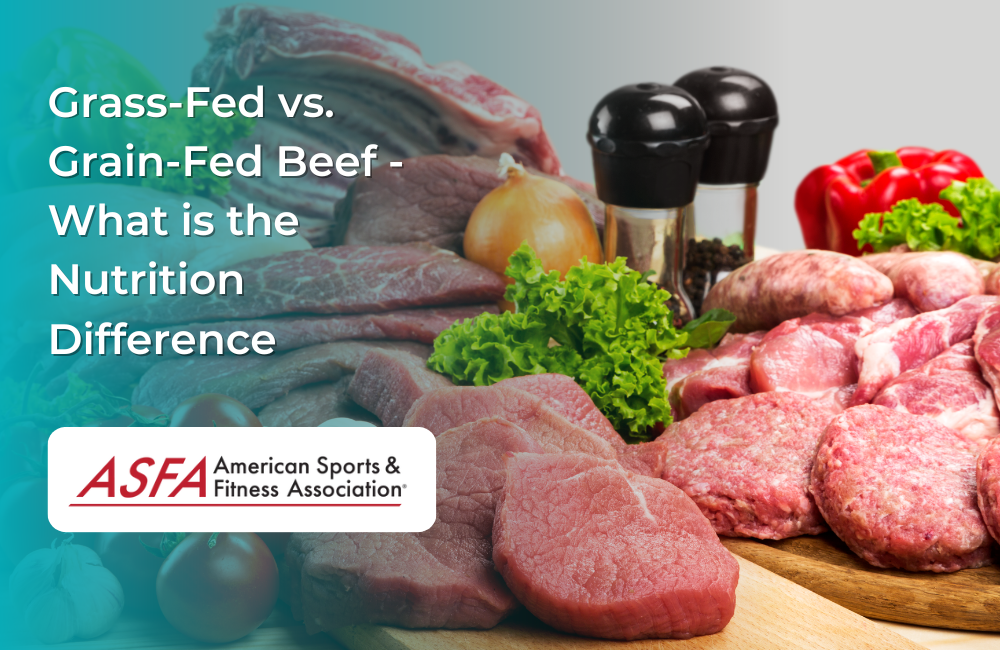It's a common misconception that one type of beef is better than another. Many factors determine the healthfulness of your meat. Cattle are not only fed different diets, but they also live in different environments, resulting in varying levels of nutrition. So how do you know which kind of beef to buy? Here's a breakdown:
Grass-fed beef has higher levels of Omega-3 fatty acids and conjugated linoleic acid (CLA).
Grass-fed beef has higher levels of Omega-3 fatty acids and conjugated linoleic acid (CLA).
Omega-3 fatty acids are essential to our health, but they're often missing from the Standard American Diet (SAD). They can be found in fish but not in grain-fed beef. Grass-fed beef contains more CLA than grain-fed meat does. CLA is a fatty acid that helps fight cancer and reduce body fat by increasing metabolism and burning calories faster than normal.
Grain-fed beef may be lower in cholesterol, but it is also lower in vitamins A, E, B-6, and B-12.
Grass-fed beef is lower in cholesterol and higher in vitamins A, E, B-6, and B-12.
Grass-fed beef might be healthier than grain-fed beef because it has less fat, more nutrients (such as omega-3 fatty acids), fewer calories, and more protein per ounce. While both types of meat have similar amounts of iron, zinc, and selenium -- all important minerals -- grass-fed beef has almost twice as much vitamin E than grain-fed. Vitamins A & D are also found in significantly higher levels in pasture-raised cattle compared to those that are kept indoors or fed corn instead of grasses like wheatgrass or alfalfa pellets).
Grain-fed beef is higher in calories, fat, sodium, and cholesterol than grass-fed beef.
Grass-fed beef is lower in calories, fat, and cholesterol than grain-fed beef. It has fewer calories than grain-fed beef because it contains less fat. Grass-fed beef also has less saturated fat than grain-fed beef and higher levels of omega-3 fatty acids (good fats) and conjugated linoleic acid (CLA).
According to the USDA National Nutrient Database for Standard Reference, 100 grams of grass-fed ground chuck contains:
- Calories: 174 kcal vs. 220 kcal for conventional ground chuck
- Fat: 13 g vs 17 g
- Saturated Fat: 5 g vs 7 g
Grains such as corn or wheat are used to fatten up the cattle before slaughter.
Grains such as corn or wheat are used to fatten up the cattle before slaughter. The grains are high in carbohydrates, which causes the cattle to gain weight faster. This means that they can be slaughtered sooner and at a certain weight.
But what's the problem with this? When cattle are fed grains, they don't get as much exercise as they would if they were grazing on grass. Grass-fed cattle also have lower cholesterol levels than grain-fed cattle.
But it's hard for cattle to digest grains, and they get sick from eating them.
But it's hard for cattle to digest grains, and they get sick from eating them.
Grains are also bad for you. Many studies show the negative effects of consuming large amounts of refined grains, including an increased risk of heart disease, diabetes, and obesity. Grain-fed beef is more expensive than grass-fed beef because it takes more land and resources to produce grain-fed cattle vs. grass-fed cattle; therefore, the prices reflect this difference in cost structure (and quality).
Cattle are given antibiotics to keep them healthy while eating grains because they can't eat them without getting sick.
The difference in nutrition between grass-fed and grain-fed beef is the difference between a healthy, natural diet and one that has been processed and altered. Cattle are given antibiotics to keep them healthy while eating grains because they can't eat them without getting sick. While this may sound like an acceptable practice at first glance, there are many reasons why it's not ideal -- especially when considering how much meat we consume as a society.
The most troubling thing about antibiotics in the food supply is that we have no idea how many we're consuming. Our bodies are meant to run on a natural diet of meat, vegetables, and fruit, not processed grains and chemicals.
The healthiest way to eat meat is grass-fed meat instead of grain-fed meat.
Regarding beef, there are two main choices: grass-fed and grain-fed. While both are good sources of protein and healthy fats, grass-fed beef has a higher concentration of omega-3 fatty acids, conjugated linoleic acid (CLA), and vitamins A, E, and B12.
In addition to being healthier than its grain-fed counterpart, grass-fed meat is also more sustainable for the environment because it requires less land area for grazing and produces less waste runoff into rivers or oceans due to the lack of corn feed in the diet of cows raised on pastureland.
Conclusion
As you can see, there are many differences between grain-fed and grass-fed beef. The best option for your health is to eat grass-fed beef whenever possible.





